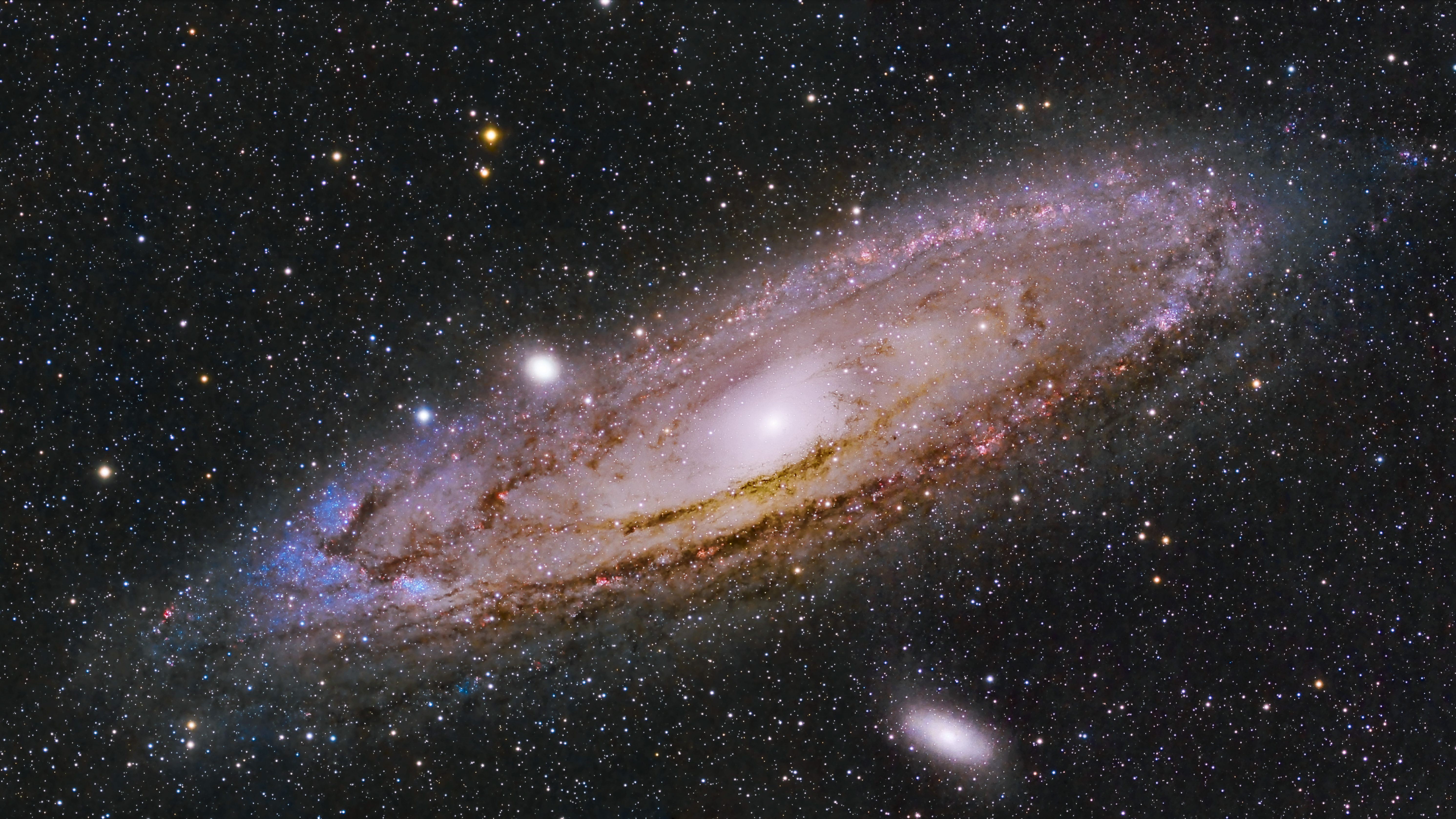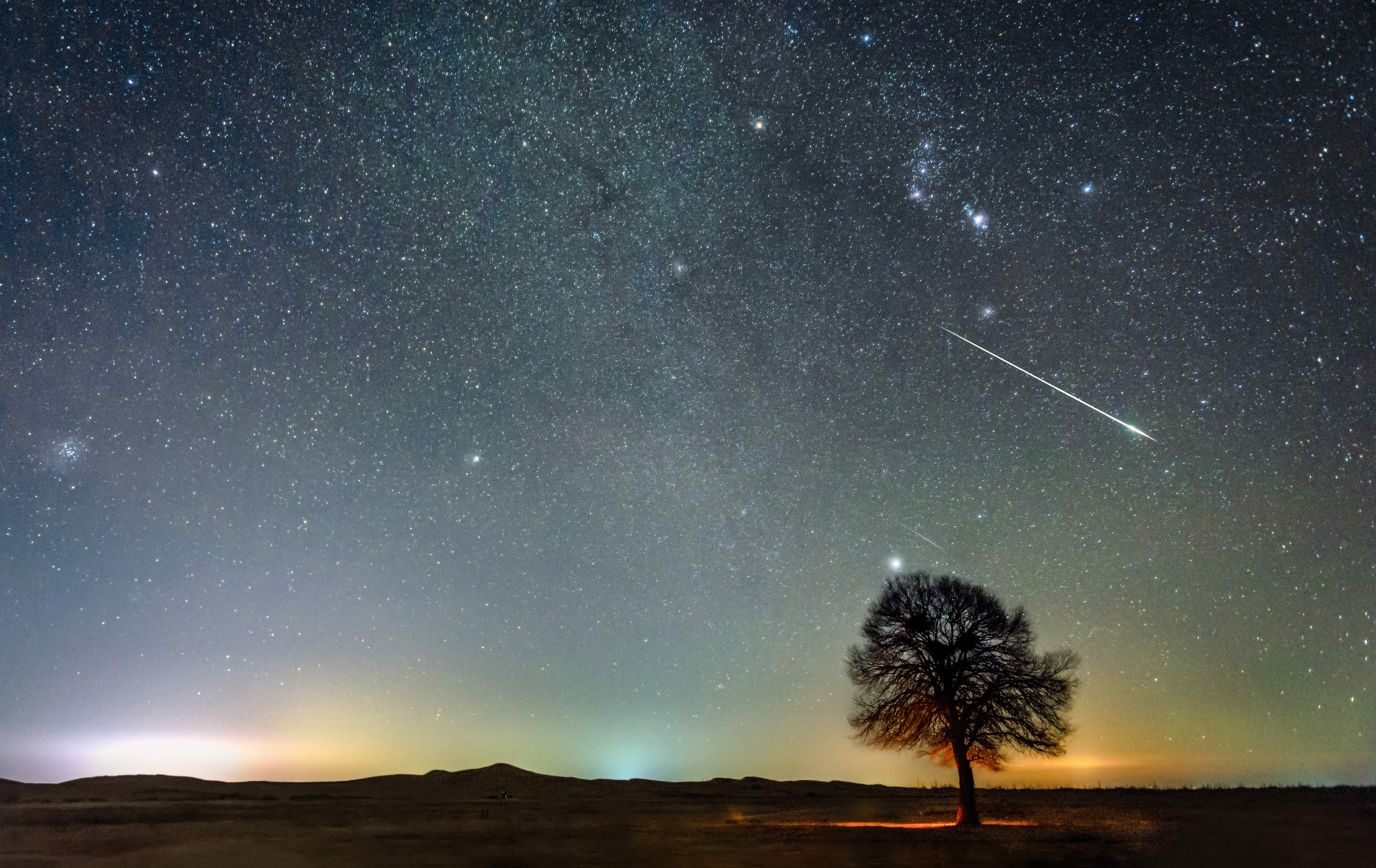
With 2024’s final “supermoon,” three meteor showers and gorgeous views of Venus close to a crescent moon, November is sure to be a good month for astrophotographers. The nights are getting seriously long at mid-northern latitudes, meaning more time to image the night sky and more chance of the aurora borealis as the sun waxes towards its “solar maximum.”
Here’s everything you need to know about astrophotography in November 2024:
Friday, 1 November: New Moon
Today at 12:49 UTC, our natural satellite slips roughly between the Earth and the sun, and lost in its glare. It leaves the night skies as dark as possible, perfect for imaging, whether deep-sky or astro-landscaping. A crescent moon will set early the few nights after today’s new moon, so a “dark sky window” effectively stretches for another three nights after tonight.
Read: The best cameras for astrophotography
Monday-Wednesday, 4-6 November: Crescent moon and Venus

These three nights are when to be outside with your set-up oriented to the southwest after sunset. That’s when you’ll see a crescent moon creeping past bright Venus, the planet now settling into its spectacular apparition as the “Evening Star.” Monday’s 10%-lit crescent moon will be below Venus, with it positioned above-left of the bright planet in subsequent evenings. Venus will be visible after sunset until March 2025.
Read: When to photograph the moon.
4-5 November and 11-12 November: Southern and Northern Taurid meteor showers
These two minor and related meteor showers, which produce about five “shooting stars” per hour in the peak hours around midnight through dawn, are responsible for the uptick in bright meteors that tend to be seen at this time of year. The Southern Taurids peak on a moonless night. Not so the Northern Taurids, which will be ruined by bright moonlight.
Read: How to photograph a meteor shower
Monday, 10 November: Moon And Saturn
Although it reached its bright annual opposition in September, Saturn is still worth imaging this month. It will be visible after sunset high above the south-southeast tonight alongside a 69%-lit waxing gibbous moon. Earth’s view of the planet’s famous rings is side-on in 2024 and 2025 and opening up thereafter.
Read: The best lenses for astrophotography
Friday, 15 November: A full ‘supermoon’

You’ll hear much about November’s full moon, typically called the “Beaver Moon,” mainly because it will be the year’s final of four so-called “supermoons.” Hype? Yes, but the sight of it rising in the east shortly after sunset in the west remains a not-to-be-missed moment for astro-landscapers. Check the moonrise/moonset times for your location and scout out a place where you’ll have a good view low to the east-northeast horizon.
Read: How to photograph the full moon
Saturday, 16 November: Uranus at opposition
Unless you’ve got an enormous telescope, the annual opposition of Uranus will be of little interest. However, if imaging the greenish-blue planet is on your to-do list, tonight’s the night because it will be a mere 2.6 light-hours away from Earth – the closest it gets this year – and rising in the east at sunset. Its magnitude of +5.6 makes Uranus technically visible to the naked eye in a very dark sky. However, the best advice is to use a telescope and high-speed digital video camera to shoot a 10-minute video, then image-stacking individual frames to increase contrast and clarity, and reduce image noise. Sky At Night magazine has a good guide.
17-18 November: Leonid meteor shower

Given that the full moon will be on the wane and rising late at night, the peak of the Leonids is worth giving a miss this year. After all, its roughly 15 “shooting stars” per hour will be more or less blotted out by bright moonlight.
Read: The best star tracker camera mounts
22 November - 4 December: Dark sky window
Astrophotography is always more productive when the moon is out of the sky. A 10-night window of dark evening skies opens tonight as the Last Quarter Moon rises around midnight and 50 minutes later each night for the next week until New Moon. Its appearance soon after as an early-setting crescent makes the darkest remaining period until Christmas.
Wednesday, 27 November: Moon and Spica
Look to the east shortly before sunrise and see the bright star Spica in Virgo, close to a 13%-lit crescent moon above the southeast horizon. Spica is one of four bright stars the moon often passes closely to during the month, the others being Regulus in Leo, Antares in Scorpio and Aldebaran in Taurus.
Read: Astrophotography: How-to guides, tips and videos.
Astrophotography shot of the month: The Andromeda Galaxy

The most remarkable sight in the northern hemisphere’s night sky is undoubtedly the Andromeda Galaxy (M31), which contains about half a trillion stars and about 2.5 million light-years distant. That makes it the closest major galaxy to our Milky Way. It’s relatively easy to image with a DLSR or mirrorless camera. A wide-angle shot of the northeastern night sky will typically capture it using a tripod and 30-second exposure. Use a 300mm lens on a star-tracker for something closer and more impressive. Imagers should use the 10-night period between the Last Quarter Moon and a few nights after the New Moon and get away from light pollution to avoid extraneous light.
Read more:







